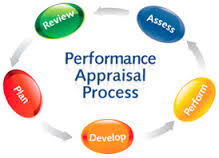Methods of performance appraisal:
Performance appraisal is generally conducted with the aid of a predetermined and formal method. Different methods of performance appraisal are shown below—
- Graphic Rating Scale Method,
- Alternation Ranking Method,
- Paired Comparison Method,
- Forced Distribution Method,
- Critical Incident Method,
- Behaviorally Anchored Rating Scales, and
- The Management by Objectives Method.
These are described below—
Graphic Rating Scale Method:
The graphic rating scale is the simplest and most popular technique for appraising performance. Graphic rating scale is a scale that lists a number of traits and a range of performance for each. The employee is then rated by identifying the score that best describes his or her level of performance for each trait. The main advantage of this method is it provides a quantitative rating for each employee. On the other side, halo effect, central tendency and also other things make an unclear sense of the result.
Alternation Ranking Method:
Ranking employees from best to worst on a trait or traits is the alternation ranking method. This is easier to distinguish between the worst and best employees that to rank them. The main advantages of this method are it avoids central tendency and other problems that occur in the graphic rating scale. But it has also some limitation. It can cause disagreements among employees and may be unfair if all employees are, in fact, excellent.
Paired Comparison Method:
Paired comparison method refers ranking employees by making a chart of all possible pairs trait and indicating which the better employee of the pair is. The paired comparison method helps make ranking method more precise. For every trait, every subordinate is paired with and compared to every other subordinate.
Forced Distribution Method:
The forced distribution method is similar to grading on a curve. With this method, predetermined percentages of rates are placed in performance categories. For example, one may decide to discuss employees as follows—
- 15% high performers,
- 20% high-average performers,
- 30% average performers,
- 20% low-average performers,
- 15% low performers.
Critical Incident Method:
This method refers to keep a record of uncommonly good or undesirable examples of an employee’s work-related behavior and reviewing it with the employee at predetermined times. This method can always be used to supplement another appraisal technique and in that role it has several advantages. These are—
- It provides with the specific hard facts for explaining the appraisal.
- It ensures that the supervisor thinks about the subordinate’s appraisal all during the year because the indicators must be accumulated therefore.
- The rating does not just reflect the employees’ most recent performance.
- Keeping a running list of critical incidents should also provide concrete examples of that specifically the subordinate can do to eliminate any performance deficiencies.
Behaviorally Anchored Rating Scales:
A BARS combines the benefits of narratives critical incidents and quantified ratings by anchoring a quantified scale with specific behavioral examples of good or poor performance. Developing BARS typically requires the following five steps:
- Generate critical incidents: Person who knows the job being appraised is asked to describe specific illustrations of effective and ineffective performance.
- Develop performance dimensions: These people then cluster the incidents into a smaller set of performance dimensions. Each cluster is then defined.
- Reallocate incidents: Another group of people who also know the job then reallocate the original critical incidents. They are given the clusters’ definitions and the critical incidents and area asked to reassign each incident to they think it fits best.
- Scale the incidents: This second group is generally asked to rate the behavior described in the incident as to how effectively or ineffectively it represents performance on the appropriate dimension.
- Develop final instrument: A subset of the incidents is used as behavioral anchors for each dimension.
There are also some advantages of this method. These are—
- It standard is more clear than other method,
- It provides feedback,
- More accurate gauge,
- It is more consistent than others,
- All dimensions are independent.
The Management by Objectives (MBO) Method:
Management by objectives involves setting specific measurable goals with each employee and then periodically reviewing the progress made. The term MBO almost always refers to a comprehensive organizaionwide goal-setting and appraisal program that consists of six main step—
- Set the organization’s goal,
- Set departmental goals,
- Discuss departmental goals,
- Define expected result,
- Performance review,
- Provide feedback.
















